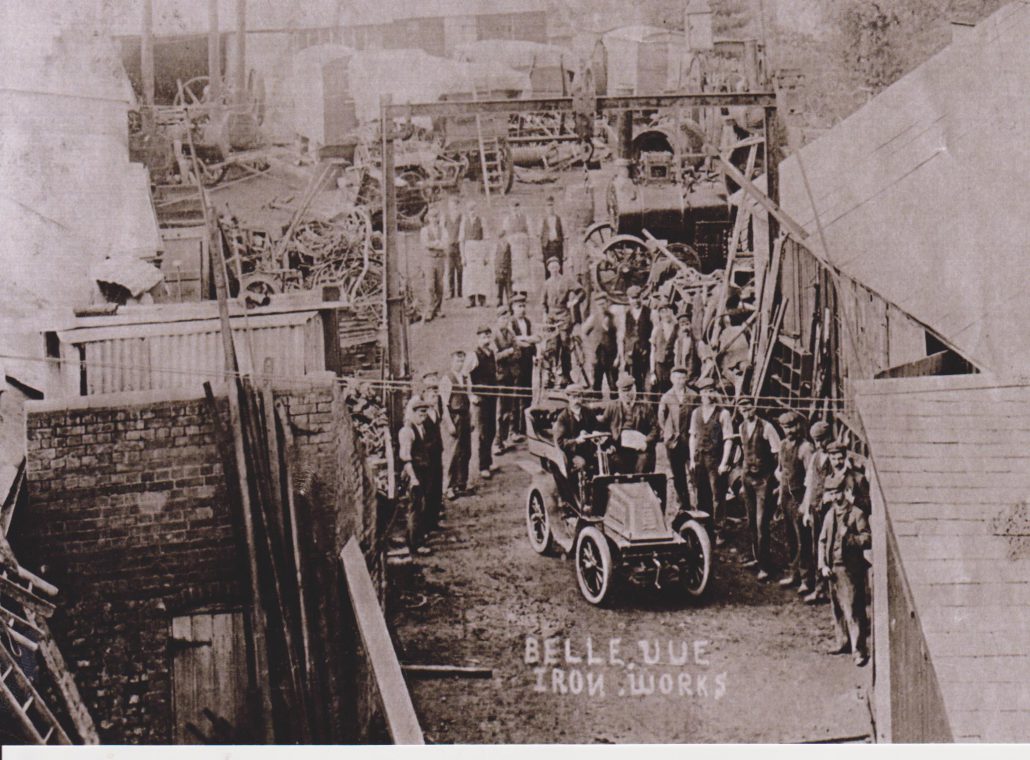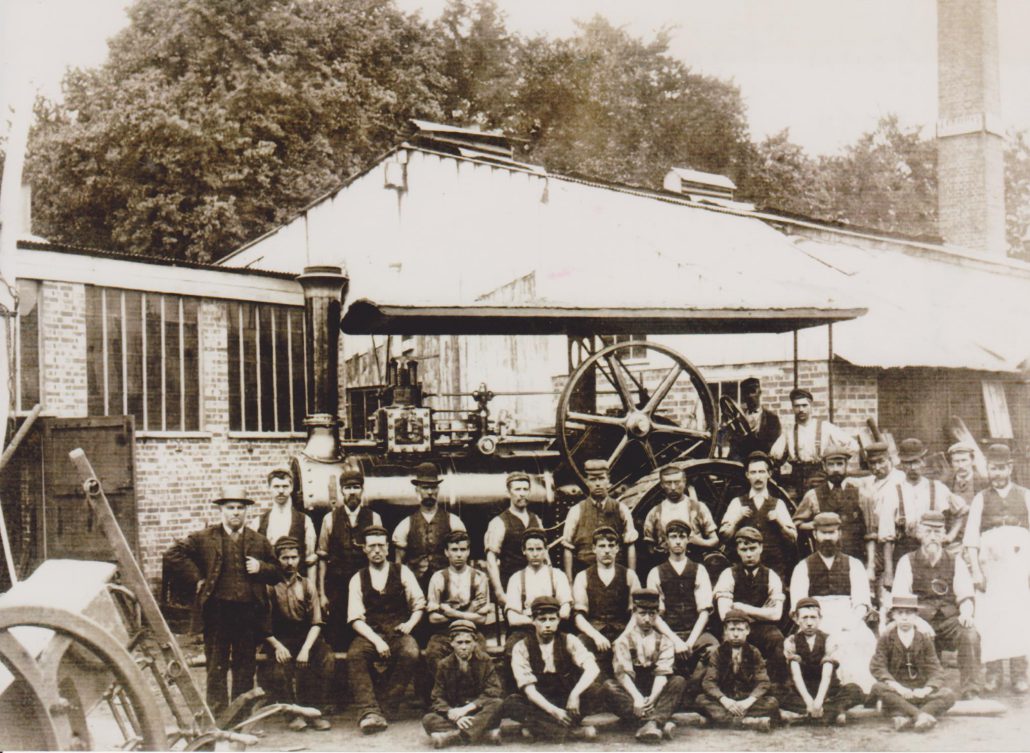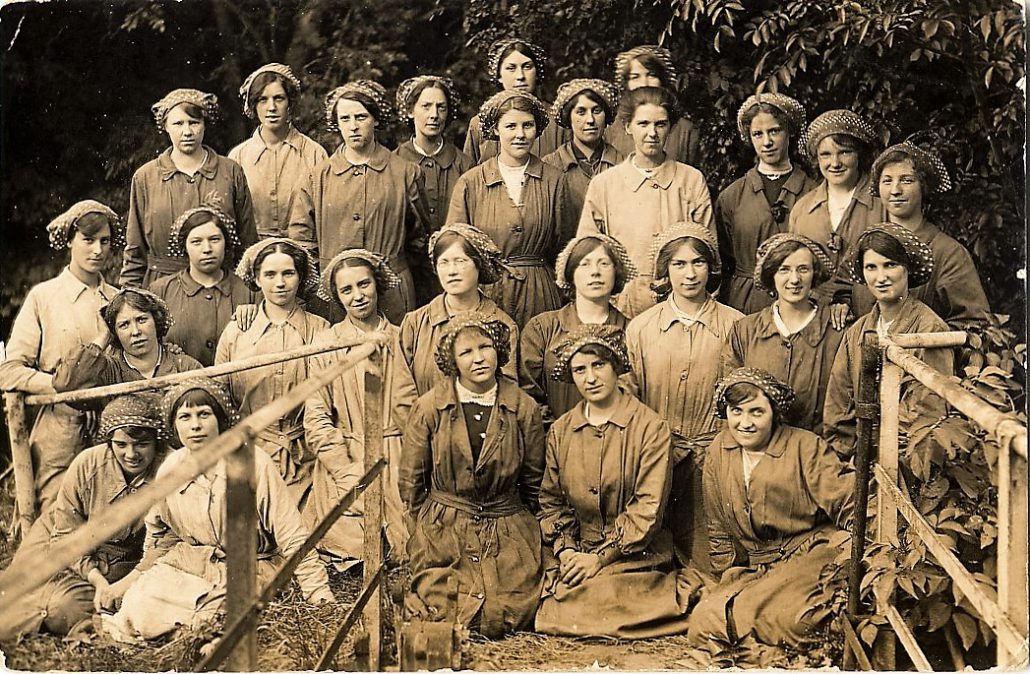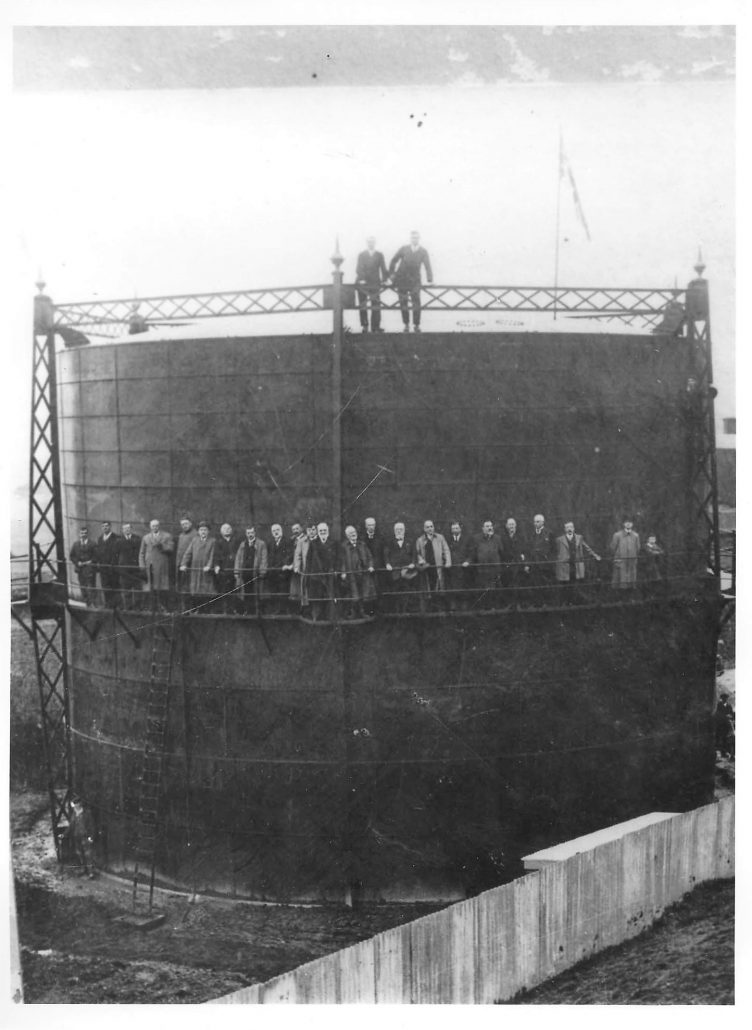Local Industry
John Farris Engineering Works
The Belle Vue Iron Works ran along Bleke Street between Haimes Lane and Victoria Street, where Homefarris is now. It was founded by John Farris, who built his home, Llanreath House, where Brionne Garden is now, on the corner of Bleke Street and Victoria Street.
The engineering works was the principal local employer, with at least eighty men in its heyday, supporting many Shaftesbury families and farmers in the district. John Farris died in July 1914, and his funeral cortege was impressive, with the town council, the firm’s workforce, farmers and business men from a wide area paying their respects. He was buried in Holy Trinity churchyard.
This photo below was taken in about 1903, and in it one can see some of the vehicles and machines which the factory made. In the top left hand corner are three portable steam engines, which could be towed to a work site and used to power machinery. To their right are shepherds’ huts and threshing tackle. A blast furnace was installed to make various iron products, such as land roller rings, saw benches, chaff cutters etc.
All the activities were very labour-intensive, involving blacksmiths, carpenters, mechanics, painters, and moulders at a later date. On farms, engine drivers were needed to drive the traction engines with threshing machines or water carts to fields where they worked until the job was completed. If necessary, they would stay overnight in one of the shepherds’ huts, which were also sold to customers. The single furrow plough was popular with farmers who bought large numbers of them. The engineering works maintained and repaired machinery, such as mowers and binders, which were drawn by horses or tractors.
The company also supplied steam rollers for road maintenance, working with Dorset County Council.
Sources and images
Ben Farris, personal recollections and photos
Dorset History Centre
Gold Hill Museum photo archive




